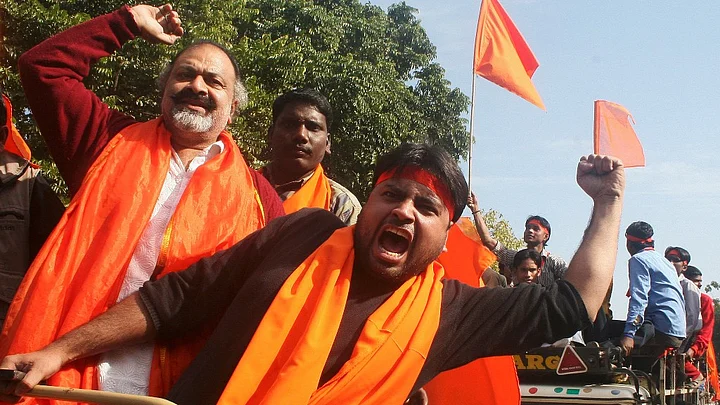This summer, Hukum Singh, the Bharatiya Janta Party’s (BJP) MP from Kairana in western Uttar Pradesh and an accused in the 2013 Muzaffarnagar riots, released a list of 346 Hindu families that he claimed had fled his constituency fearing atrocities at the hands of Muslim criminals and extortionists.
RSS ideologues passed the list around, helpfully explaining that the supposed “exodus” was an expression of the same kind of “anti-Hindu sentiment” that had resulted in the Partition of 1947.
“UP should not take Kairana lightly,” the BJP’s President Amit Shah said in a public rally in Allahabad in June, “The Kairana exodus is no ordinary event.”
Yet, the Kairana “exodus” – investigations by the press suggested – was, in fact, a non-event. Some of the people on Singh’s list had migrated for economic reasons, some to live with their children who had left the town, some had not migrated at all, some were dead.
As the summer rolled on, the “Kairana exodus” was dismissed as a political stunt by BJP to consolidate its Hindu vote base, only to be revived last month by the National Human Rights Commission (NHRC).
On 21 September, the NHRC released a series of “findings” that attempt to lay a patina of credence on a cloud of rumours and partial truths.
This is not the first time the Commission has been called in to lend a helping hand to the government of the day. In 2008, for example, the NHRC had investigated Chhattisgarh’s Salwa Judum and deemed it a “spontaneous revolt of the tribals” against the Maoists, despite masses of evidence suggesting that Judum members had been recruited, trained, armed and deployed by the state and central government. (The Judum was ultimately outlawed by the Supreme Court in 2011.)
In Kairana, the Commission began its investigation, the press note states, on a complaint from Monika Arora, described as Supreme Court advocate and “convener of an NGO”. A perusal of Advocate Arora’s website reveals her as a vocal and active member of BJP, and a legal champion of the Hindutva agenda.
Her victories include Dinanath Batra’s ultimately successful quest to force Penguin to retract Indologist Wendy Doniger’s book, ‘The Hindus: An Alternative History’; a battle to force the Delhi government to reconstitute Cow Protection Boards under the Delhi Agricultural Cattle Preservation Act of 1994; and an attempt to replace foreign languages taught in Kendriya Vidyalayas with Sanskrit.
In its investigation into Arora’s complaint, the commission says it investigated “at least six” cases of supposed migration and spoke to “at least four” people on the phone, making a total of 10 out of a possible 346 cases: a surprisingly slender list, given that even the newspapers managed to interview more people. The Indian Express, for example, interviewed 22 people and found many discrepancies in the list.
The report’s conclusions reflect this absence of rigour. Rather than embarking on an investigation, the NHRC seems to have faithfully reproduced the prejudice and fears of a section of Kairana’s Hindu trader community.
The NHRC’s most damning observation is the claim that the resettlement of “about 25/30 thousand members of Muslims Community” in the aftermath of the Muzaffarnagar riots of 2013 has meant, “the demography of Kairana town has changed in favour of the Muslim Community becoming the more dominating and majority community”.
It is unclear where the committee has got these numbers.
In an investigation earlier this year, The Quint found that in Shamli district, 969 riot-affected Muslim families were compensated by the government for resettlement. A survey by Aman Biradari and the Afkar India Foundation, both NGOs, found 270 of these families had settled in Kairana – suggesting at most, an addition of 2000 people to a town of 89,000.
In its story, The Quint has also plotted a map that reveals that Muslims fleeing their homes post 2013 have been widely dispersed in scores of small settlements across the district, rather than congregating in Kairana.
Elsewhere in their findings, Commission members reveal their inability to understand the region’s local economy, noting that two petrol pumps in Kairana were recently closed “due to non-payment of money for the petroleum products by persons with criminal tendencies of Kairana and threatening the workers/owners of both the petrol pumps.”
Also Read: Everybody Loves a Good Riot
While Kairana, like most of western Uttar Pradesh, is not as safe as many metros, the reason for the closure of the pumps, locals explained, is the proximity of several large petrol pumps just across the Haryana border, where petrol is cheaper by Rs 4 a litre.
The report is on firmer ground when it draws attention to the frequent street harassment of women in the region ineptitude of the Uttar Pradesh police, and their delay and – at times – outright refusal to investigate complaints. Yet, this problem of women’s safety and police callousness is experienced by all residents across lines of caste, class and religion in the region.
By interpreting broader societal trends like migration, and concerns like personal safety, through a communal prism, the NHRC would have pleased the Bharatiya Janta Party, but has further eroded its own credibility to the point of irrelevance.
(At The Quint, we question everything. Play an active role in shaping our journalism by becoming a member today.)
